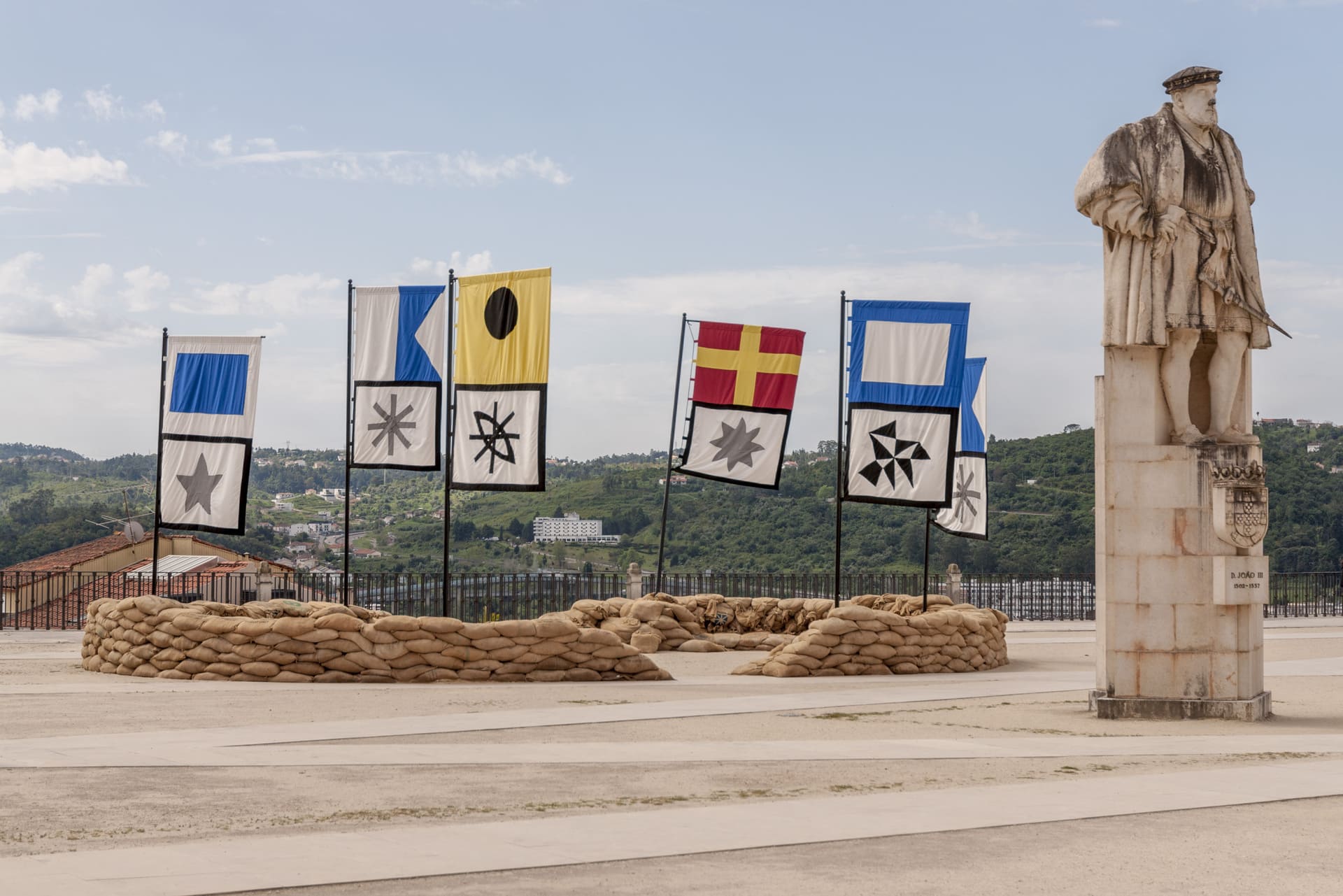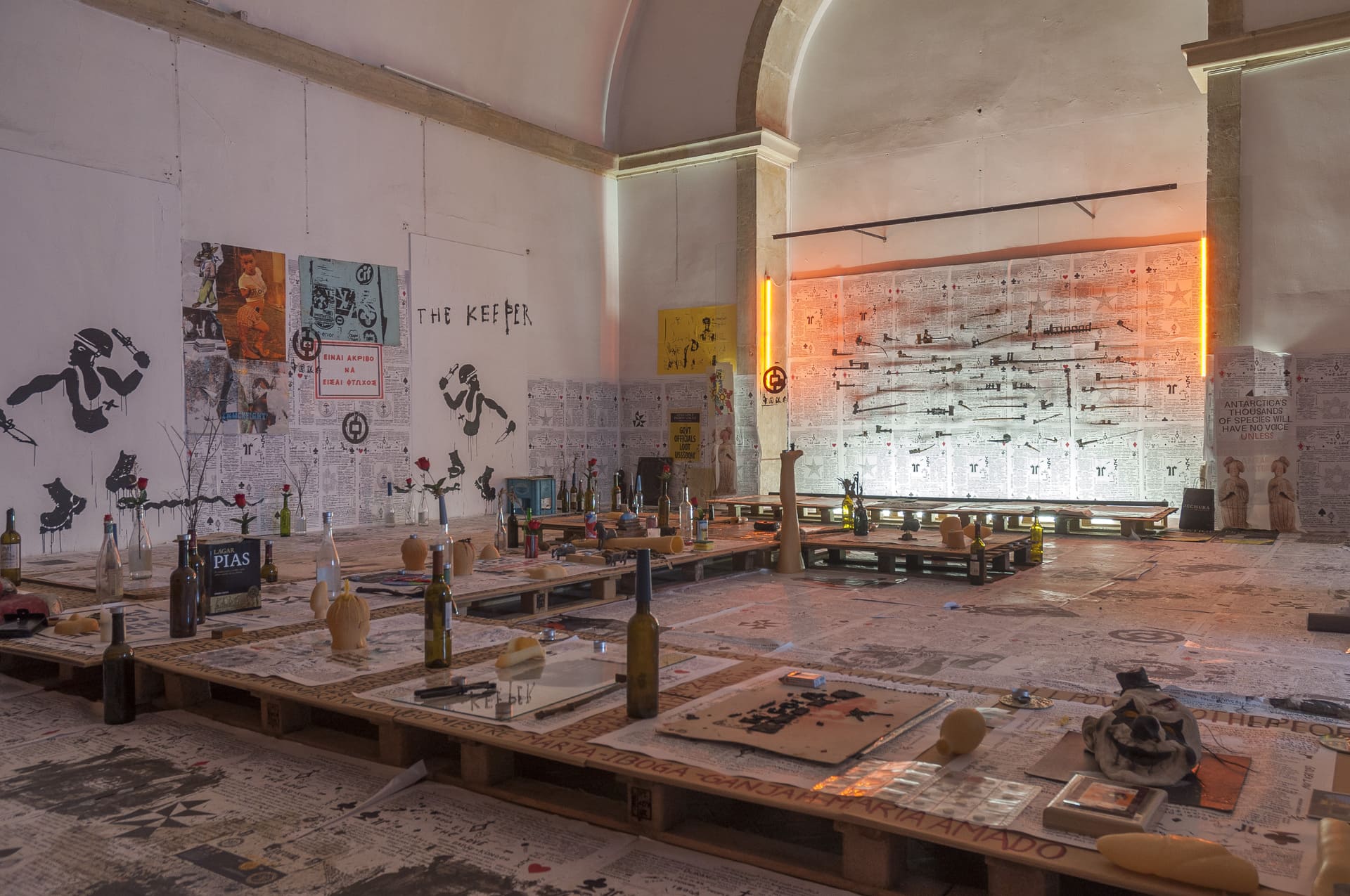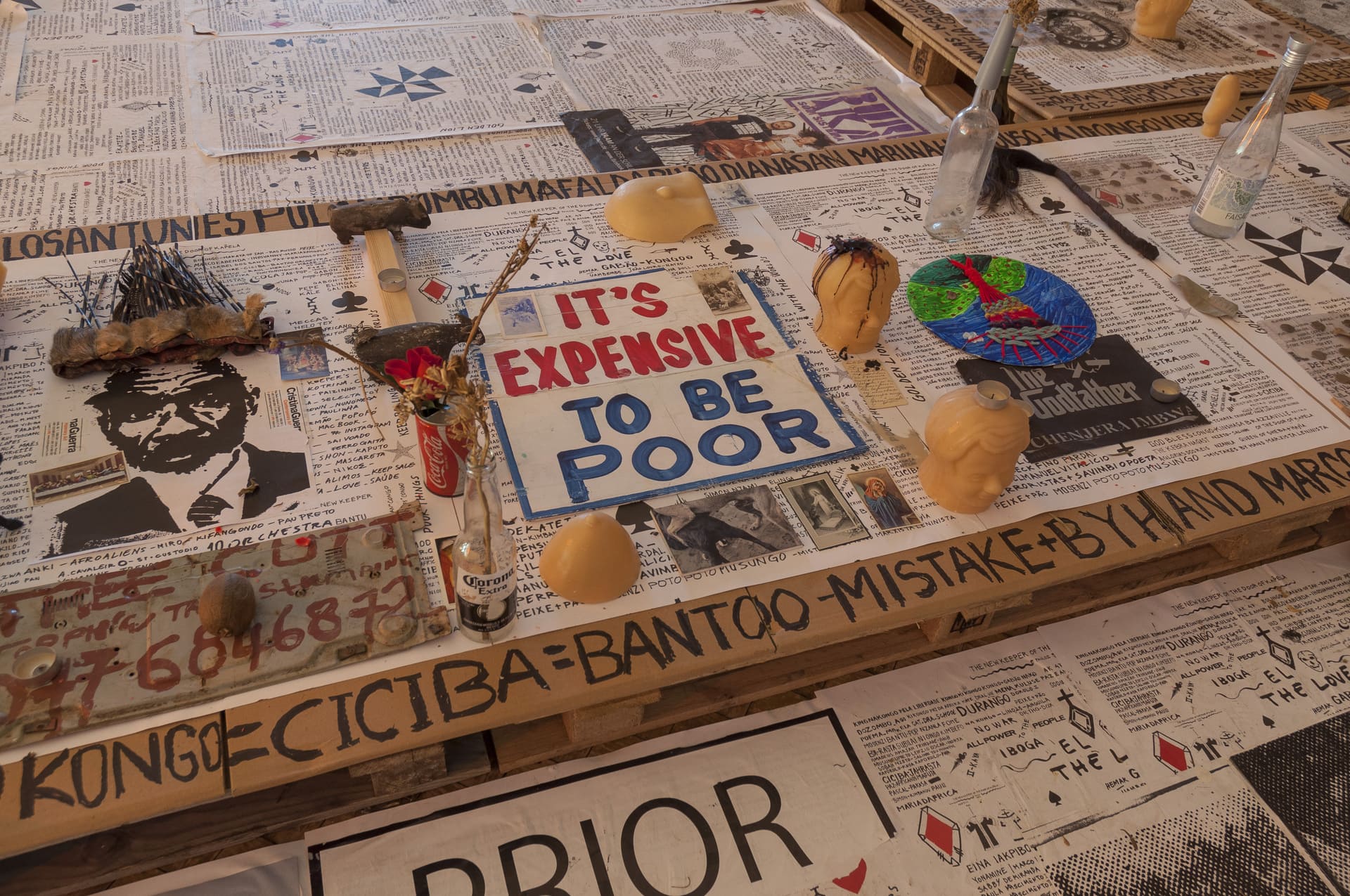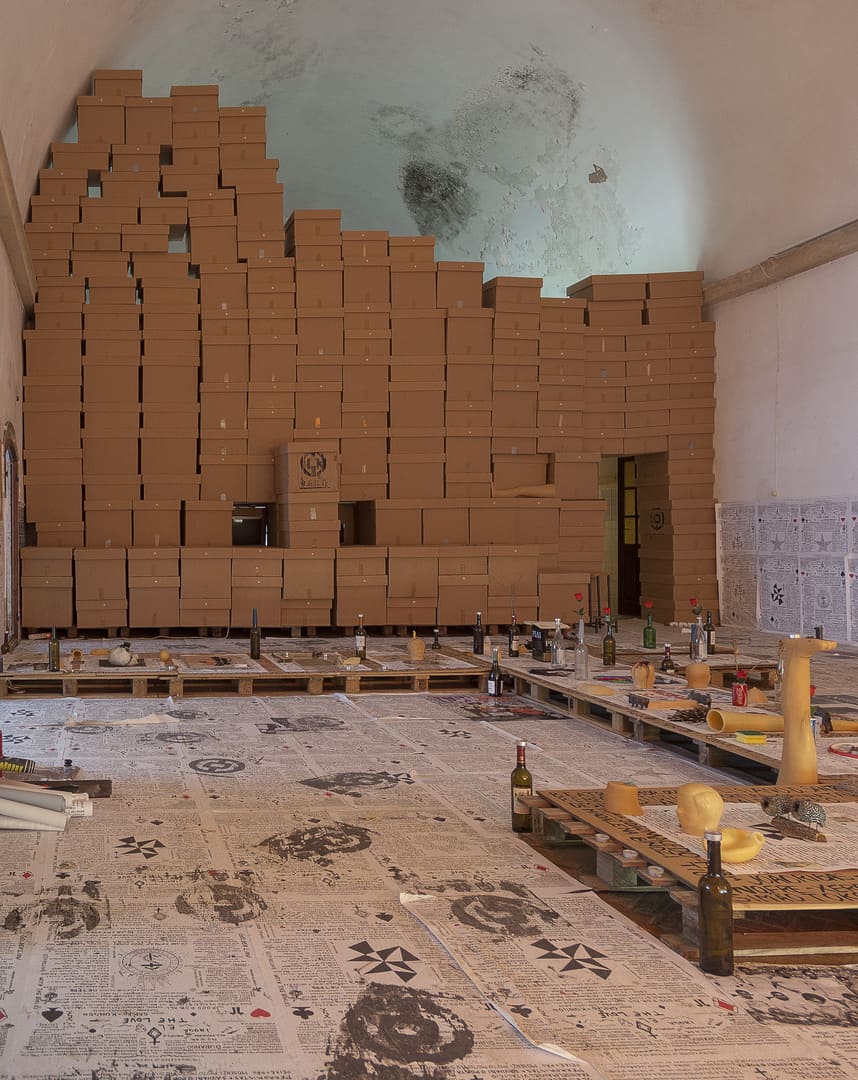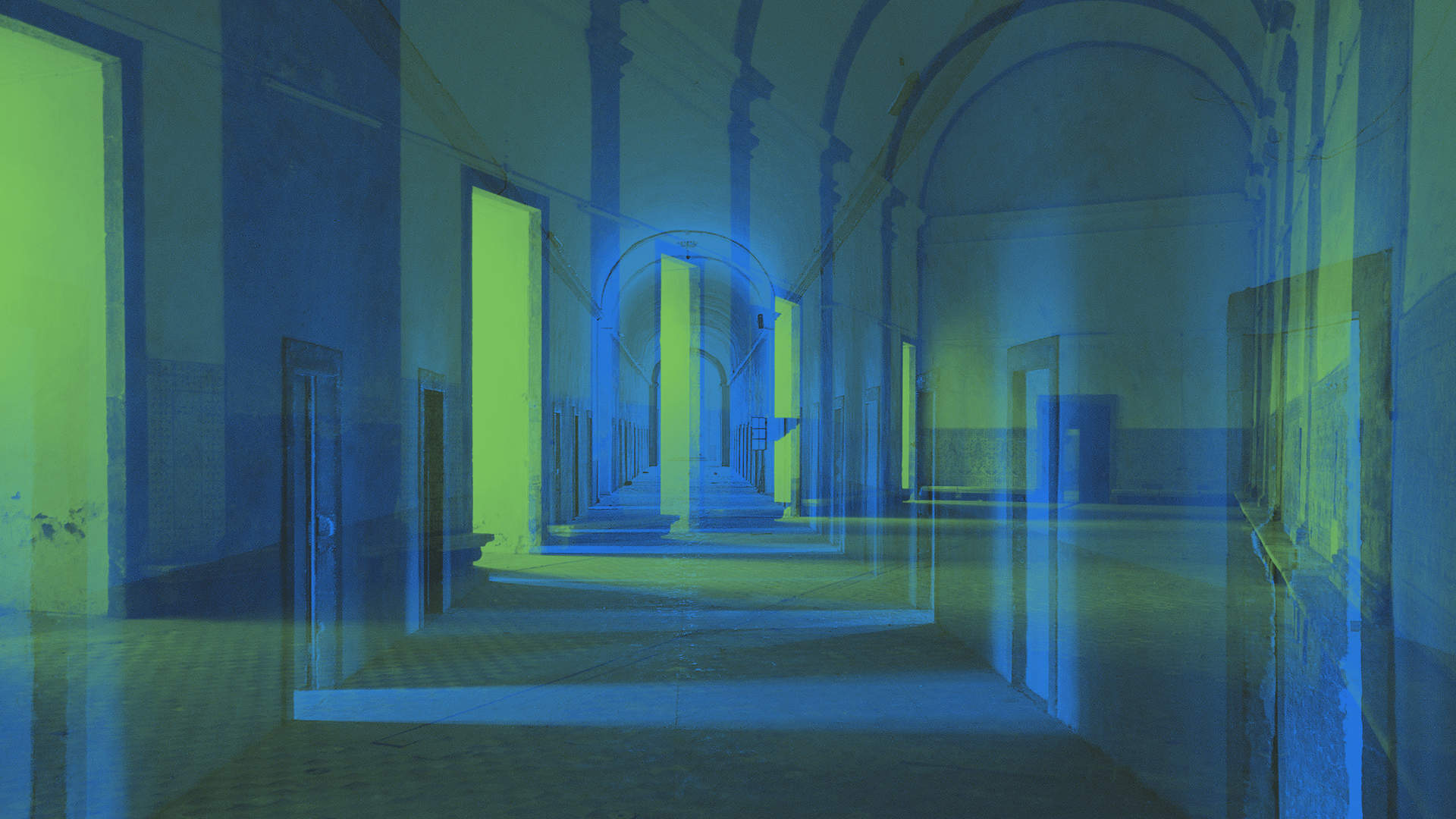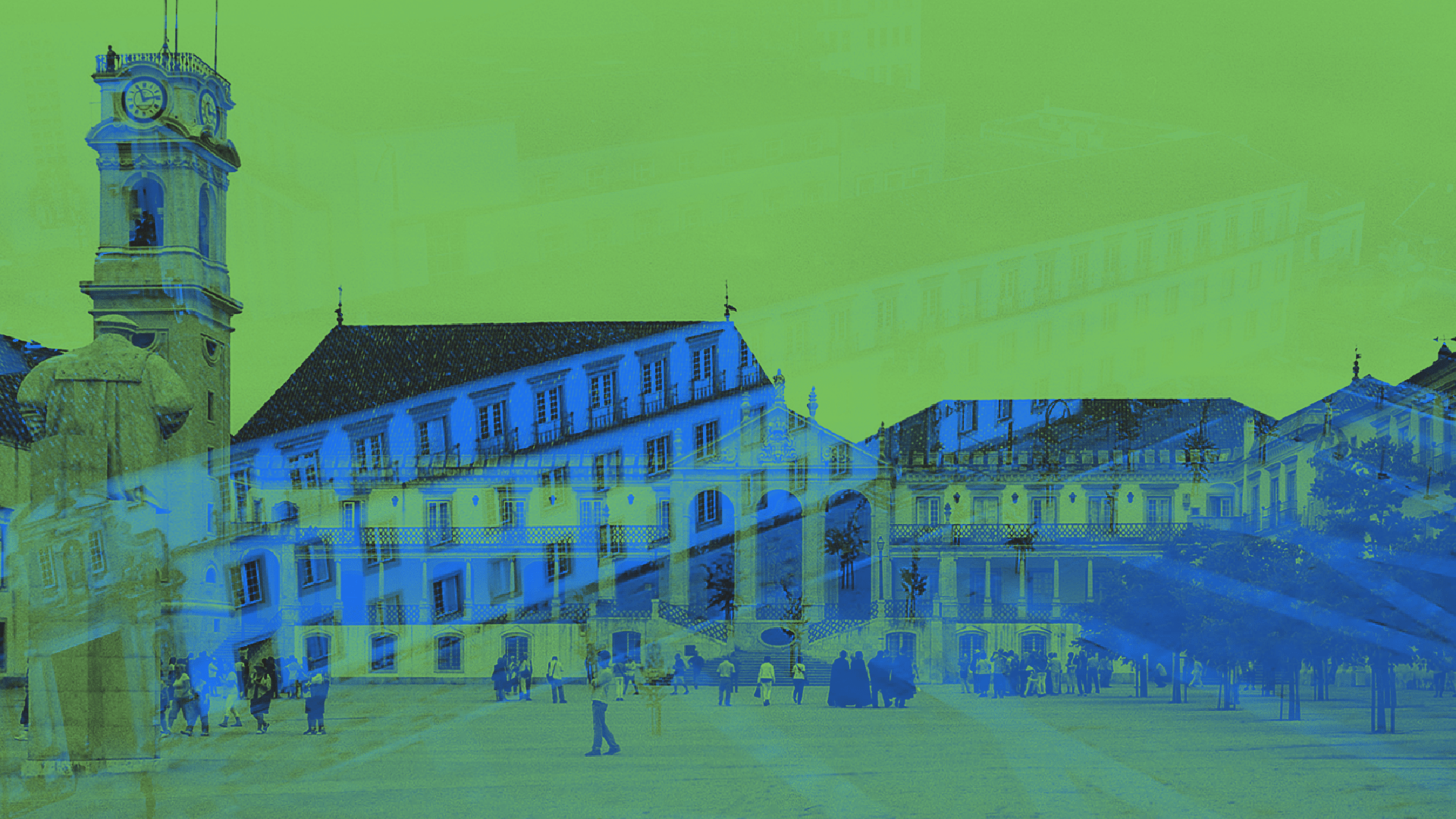Yonamine
Yonamine



Angola, 1975
The imagery created by Yonamine (Luanda, Angola, 1975) is permeated by the cultural influences of the countries where he has lived. Having grown up in different countries, from the Democratic Republic of Congo to Brazil and Portugal, he returned to Angola in 1994, during the civil war. These experiences resurface in his work through his diaries. Self-taught, he began working as a visual artist as a teenager, while living in the theatre and graphic arts milieu of his native country. Later, he grew close to the generation of artists who founded the Luanda Triennale.
In producing his own vocabulary, the artist links legacies from his rich autobiography, critical thinking about the political and historical processes that have built contemporaneity, with images from popular culture. Associating a myriad of found objects with his paintings, drawings, graffiti, videos, photographs, tattoos and body art, Yonamine builds large-scale installations characterised by an exaggerated, “carnivalesque” aesthetic. The artist uses sophisticated humour and irony to question the mythologies of the artistic field and its status quo and rethink the relationship between Europe and, more specifically, Portugal and its colonial past and present. Thus, the history of Africa and its diaspora, migration, the political and ideological processes of extraction, dispossession and dehumanisation, Western cultural invasion and domination and contemporary forms of colonisation (in language, popular imagery and economic policies) formalise an encounter — and are summed up in the iconic phrase: “It’s expensive to be poor.”
MOSTEIRO DE SANTA CLARA-A-NOVA
Untitled, 2024
Installation, variable materials and dimensions.
A recent visit to the reserves where the University of Coimbra's collections are kept, especially the collection of traditional objects from Angola, inspired Yonamine in this installation commissioned by the Biennial. Piles of empty boxes are arranged in such a way as to create an artificial environment that harks back to the unease of the archives and the context of the accumulation of objects from Africa. These boxes spatially reorganise the room of the Monastery of Santa Clara-a-Nova, in an imbricated relationship with its architecture. And Yonamine juxtaposes various other temporalities and references, through video, the assemblage of objects, sculpture, phrases, composing a continuous and imaginative bric-a-brac with a great capacity for self-criticism and strangeness. Using humour, he dismantles some of the myths and pretensions of contemporary artistic and intellectual activity (the pipes refer to Angolan traditions, but also to Magritte: "ceci n'est pas une pipe [this is not a pipe]", while also referencing Yonamine's previous work on hallucinogenic drugs).
PÁTIO DAS ESCOLAS
Arapis, 2024
Installation, variable materials and dimensions
"Inspired by the visit to the island of Lesbos I made with the artist André Cepeda in 2021, I reflected on the tragic fate of thousands of migrants who try to cross the sea in the hope of a better life. Each flag combines a maritime code and the stars of the Tokoist church founded in Angola. This church usually uses the stars to identify the choir's suits at services, corresponding to voices such as Bass, Soprano, Alto and Tenor. The maritime code conveys a specific message to other vessels and people on land, for example W—Whiskey: I need medical assistance. These messages are largely ignored or not seen when it comes to ships carrying illegal migrants who often disappear into the vast sea. In this piece, I take advantage of the maritime code to write a pejorative expression used in Greece to diminish blacks and Arabs, which is ARAPIS. The combination of religious and maritime codes gives us a schizographic reading."
Yonamine
Yonamine lives in Athens, Greece. His work has been exhibited in various national and international institutions, including: Centre Georges Pompidou, Fundação Bienal de São Paulo, Museu de Arte Moderna do Rio de Janeiro, Centro Cultural Banco do Brasil, Fundação Serralves, Centro Internacional das Artes José de Guimarães, Museu Afro Brasil, Caixa Cultural do Rio de Janeiro, Institut Valencià d’Art Modern, Museu Coleção Berardo, Galeria Municipal do Porto, Centro Internacional de Arte e Cultura de São Tomé, National Center for Contemporary Arts, Fundação Arpad Szenes-Vieira da Silva, Jahmek Contemporary Art and Círculo de Artes Plásticas de Coimbra.
